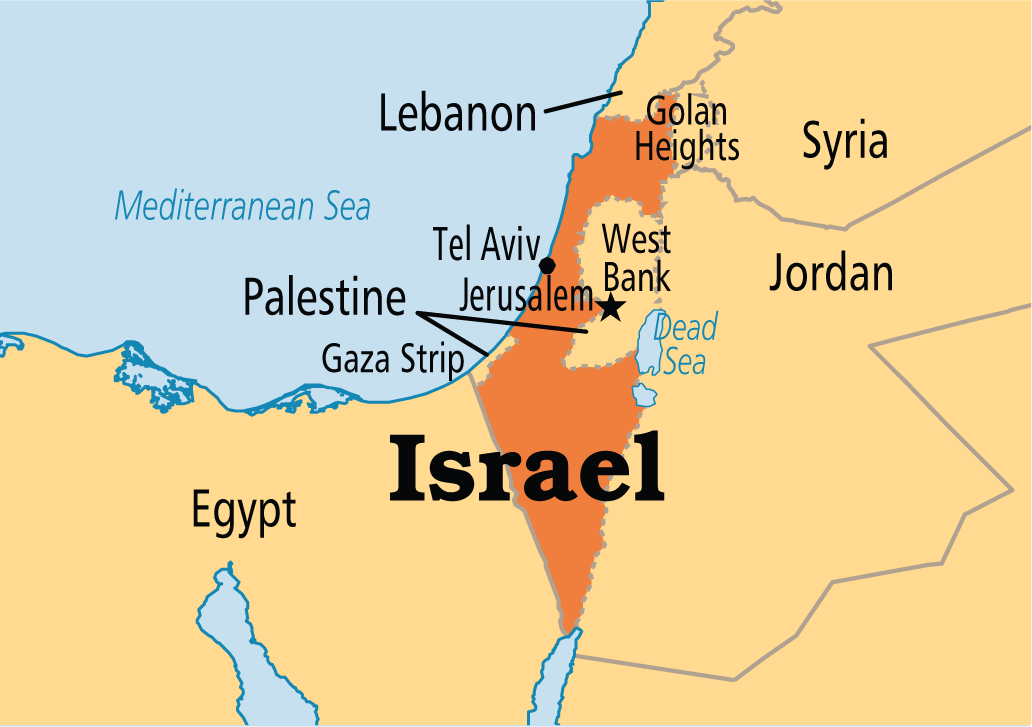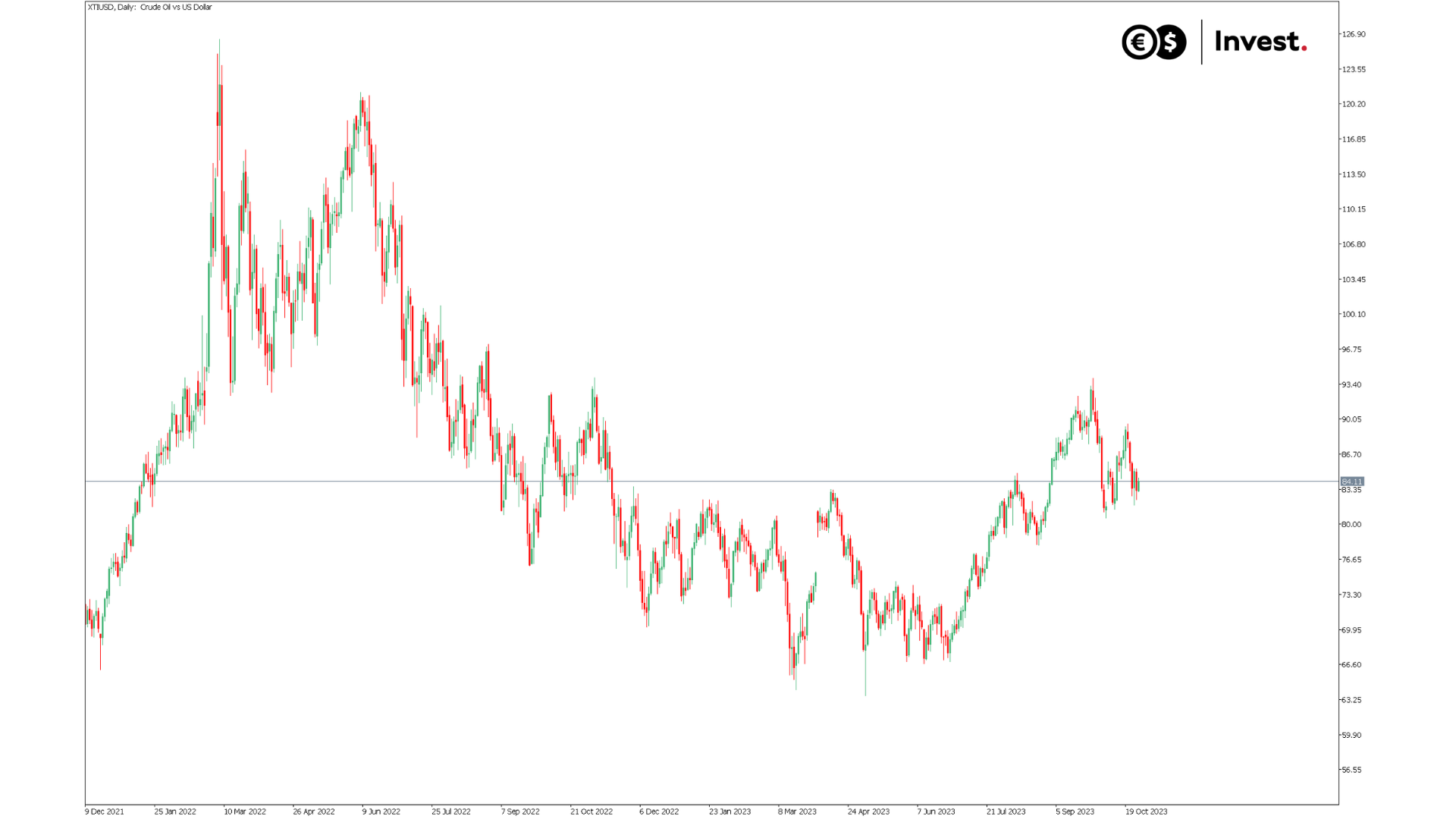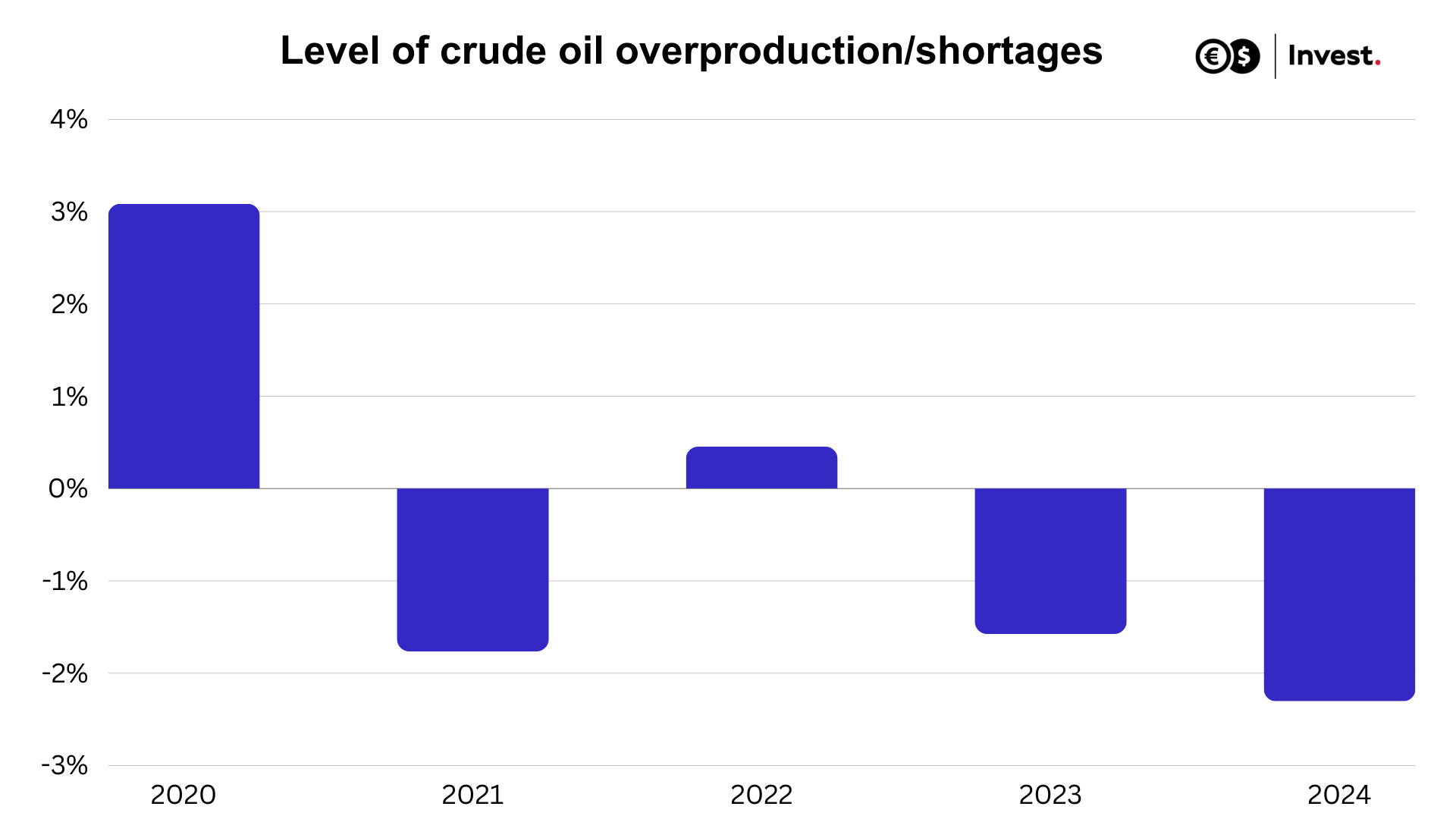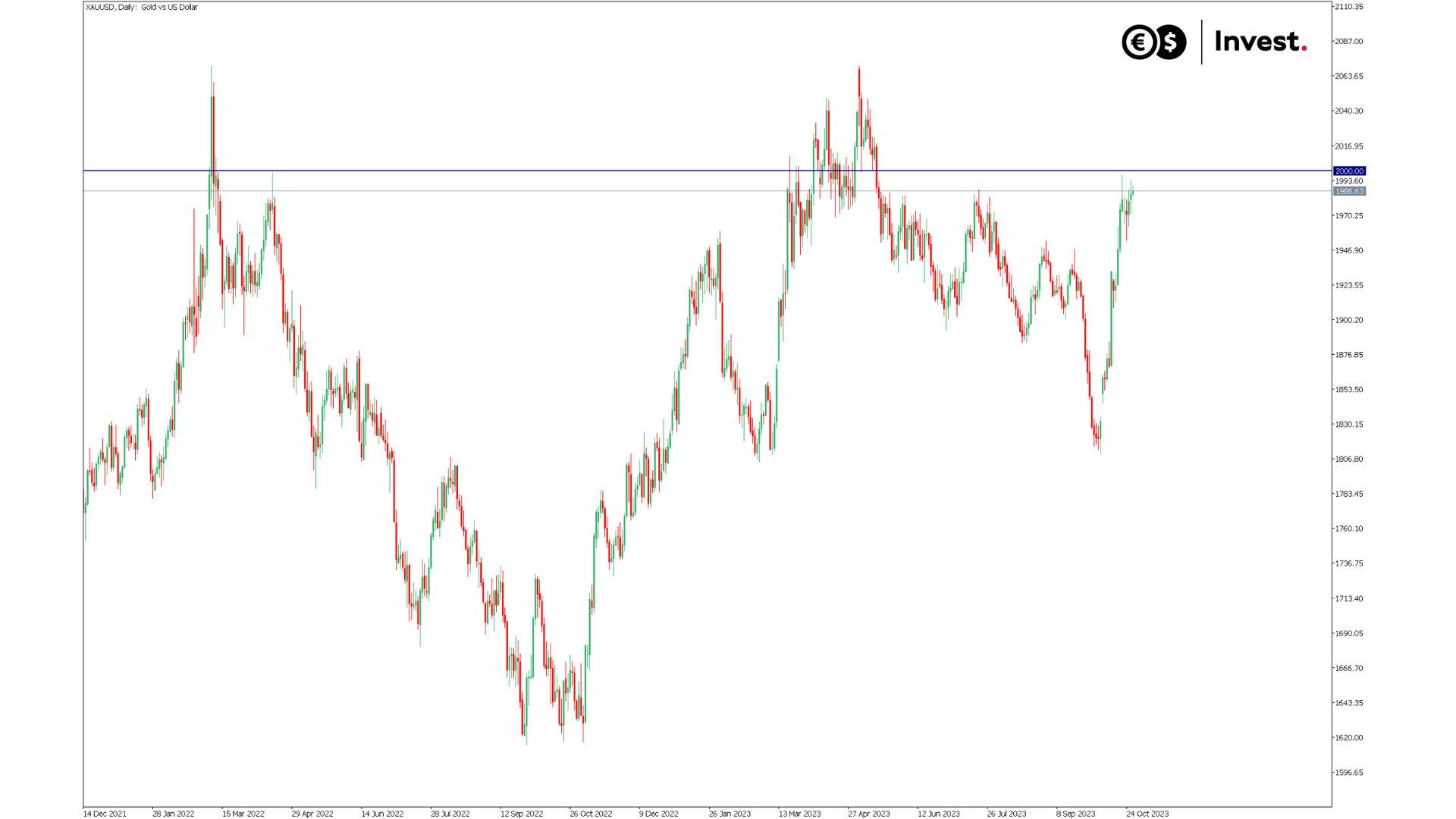The escalation of the Middle East conflict may come as a surprise to some observers in the West, especially since the narrative so far has been that the United States is providing security for Israel. However, in order to better understand how the situation might unfold, we need to understand its causes. Therefore, let's take a look at the reasons why Gaza has become so radicalised and what impact this may have on the price quotations of oil, gold and the US S&P 500 index.
Table of contents:
- Situation in Gaza harder than it looks
- Why are oil prices not rising?
- Will the shock to gold prices continue?
Situation in Gaza harder than it looks
Long-term isolation and ongoing conflict have led to a significant lag in the economic development of the Gaza Strip compared to the West Bank. According to the International Monetary Fund, in 2022. Gaza's GDP per capita was only a quarter of that of the West Bank, and unemployment and poverty rates were much higher. Both locations had a population of around 5 million people, 2 million of them in Gaza, where 98% of the population adheres to Sunni Islam.

Source: Kompas Travel
The region's isolation from the rest of the world and restrictions on the import of fuel and other goods and the movement of people into and out of Gaza since 2006 have resulted in a significant increase in the unemployment rate, reaching 45%, and drastic poverty affecting 53% of Gaza's population in 2022, compared to 13% and 14% in the West Bank. Unemployment among young people, who make up the majority of Gaza's population, has exceeded 60%, and many of the region's residents must rely on various aid programmes, including medical support, to survive.
Nonetheless, despite numerous difficulties, especially in terms of access to electricity, GDP per capita (measured in dollars) in Gaza has remained unchanged over the past 16 years, largely due to government spending. The sectors that grew the most were construction, services and agriculture. The former recorded an average annual growth of 20% throughout the blockade period. Despite the difficult conditions, the Gaza Strip was able to survive mainly due to its developed agriculture. One of the production methods that contributed to this success was hydroponic cultivation without soil, which was nominally inefficient under these conditions. However, it eventually became so efficient that agricultural exports have increased by 13.5% per year since 2015. This, together with import restrictions, allowed Gaza to become a net exporter at the end of the period. However, the energy crisis has influenced the industrial sector to hardly grow for years, due to declining levels of investment.
According to United Nations estimates, at least 500,000 people have left the Gaza Strip since 7 October. Most of the refugees are heading to Egypt, but some are also leaving for other countries such as Jordan, Lebanon and Turkey. At the moment, it is difficult to determine how many people have chosen to stay in these regions, which after the massive rocket attacks often resemble the eastern frontline of Ukraine more than places inhabited by people. As a result, it is very difficult to accurately predict the current economic situation in this region, which has almost completely lost access to energy infrastructure and clean water.
Why are oil prices not rising?
Despite the fact that the conflict is taking place in the Middle East, a region which, according to the OPEC report, is the world's largest producer of crude oil and accounts for 32.7% of global production, we have not seen a significant impact on crude quotations. From the moment the conflict escalated until now, it has only risen by 2%, after a brief shock. However, this information is not entirely accurate. Analysing the members of OPEC, we note that neither Israel nor any of its neighbours are members of this cartel. The most exposed to the conflict seems to be Iran, which openly supports the activities of Hamas on the territory of the Gaza Strip. Nevertheless, as long as there is no significant escalation of the conflict, we do not expect a reaction in the oil market comparable to what we have seen with the outbreak of war in Ukraine.

Source: Conotoxia MT5, XTIUSD, Daily
It should be noted, however, that despite this, the price of this crude may continue to rise. According to the OPEC report, at current production levels, the oil deficit could reach 3.2% in the last quarter of this year and an average of 2.3% for the whole of next year. This is a relatively similar level of shortfall to what we have seen in 2021.

Source: OPEC
Will the shock to gold prices continue?
Since the escalation of the Gaza conflict, the price of gold has risen by more than 8%. We are currently approaching the $2,000 support level. These increases coincide with growing uncertainty over the geopolitical situation in Israel. Gold is widely seen as a 'safe haven' for investors. It is interesting to note that the king of metals is virtually the only asset type in this category that responds to growing uncertainty. For example, US bonds or the US dollar itself do not show the same impact. Currently, we are uncertain whether more central banks have started to increase their gold reserves following the outbreak of the Gaza conflict. So far, the biggest buyers of bullion in the first half of 2023 are China, Poland and Singapore. Given the lack of reaction in other assets considered safe havens, the likelihood of a weakening of the upward trend in gold prices is increasing.

Source: Conotoxia MT5, XAUUSD, Daily
Grzegorz Dróżdż, CAI MPW, Market Analyst of Conotoxia Ltd. (Conotoxia investment service)
Materials, analysis and opinions contained, referenced or provided herein are intended solely for informational and educational purposes. Personal opinion of the author does not represent and should not be constructed as a statement or an investment advice made by Conotoxia Ltd. All indiscriminate reliance on illustrative or informational materials may lead to losses. Past performance is not a reliable indicator of future results.
CFDs are complex instruments and come with a high risk of losing money rapidly due to leverage. 72.95% of retail investor accounts lose money when trading CFDs with this provider. You should consider whether you understand how CFDs work and whether you can afford to take the high risk of losing your money.


